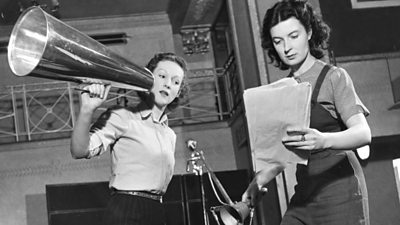What Can Go Wrong?
- Loud noise can have long term effects on hearing, from a variety of sources; speakers and the local environment e.g. explosions, events, music etc.
- Exposure to this loud noise can cause permanent deafness or other forms of hearing damage such as tinnitus (a ‘ringing’ in the ear) or other impairments, which can also occur in combination with hearing loss. Eventually you may be unable to continue working in live music or enjoy a full social life.
- Acoustic shock (sudden exposure to very loud noise) may cause damage to hearing.
Legal/�鶹�� Requirements
- The Control of Noise at Work Regulations 2005 requires employers to ensure that their employees are protected from exposure to excessive noise levels that could have a detrimental effect upon their hearing.
- The Regulations sets an upper action level of 85db(A) averaged over an 8 hour period, (87dB(A) when taking into account the protection of earplugs).
- The use of hearing protection on stages and in stage pits at most events is MANDATORY; you do not have a choice if you want to work on or near the stage.
Control Measures
General Controls
- Identify where there may be a risk from noise and who is likely to be affected
- Consider what action needs to be taken to eliminate or reduce the noise level & implement it
- Reduce & keep to a minimum the amount of time exposed to the noise - compare the level of exposure relative to the time exposed
- Reduce noise levels using distance so teams should position themselves away from loud noise sources
- Ensure hearing protection is provided if assigning staff to foreseeably noisy places or locations
- Use hearing protection that is specific to the environment, particularly when mandatory protection is required (eg in on-stage environments).
- You should use appropriate headphones or reusable/moulded earplugs. N.B. Headphones and ear plugs can also be used together – see Wearing headphones
- Ensure staff take regular breaks & that this is taken somewhere quiet
- Make a record of what is done & review this regularly
- Make sure hearing protection is replaced if it becomes damaged or worn out
- Consider the Noise Awareness Training course if routinely exposed to noise at events
- Identify any employees who need to be provided with hearing health surveillance and whether any are at particular risk
- Follow the acoustic shock procedure starting with urgent referral to Occupational Health - to be used in the event of a sudden very loud unplanned noise exposure.
Audience noise exposure
- Most members of the audience will not attend events regularly enough to suffer serious hearing damage solely as a result of going to entertainment events. However, the louder the events can contribute significantly to the overall sound exposure that members of the audience receive throughout their life, including noise from other leisure activities, at work and at home, therefore increasing the risk of damage to their hearing.
- There is no specific legislation setting noise limits for the audience exposure to noise. However, the general requirements of health and safety legislation and civil law duties relating to negligence require audiences to be protected against and informed of the risk of damage to their hearing.
Guidance
- The event continuous sound level (Event Leq) in any part of the audience area should not exceed 107dB(A) and the peak sound pressure level should not exceed 140dB.
- Where practicable the audience should not be allowed within 3 metres of any loudspeaker. Under no circumstances should the audience and loudspeaker separation be less than 1 metre.
- Where the Event Leq is likely to exceed 96dB(A) advise the audience of the risk to their hearing in advance, either on tickets, via advertising or with notices at entry points.
- Ensure during the sound check that the difference in sound level between the front-of-house sound mixing position and the front-of-stage audience barrier, and where delay / distribution stacks are in use, at the audience barrier for each delay / distribution stack, are established. This will allow a guideline sound level to be established for control at the front-of-house sound mixing position, which will restrict the whole audience sound level to below the Event Leq.• Sources of noise other than music also need to be properly controlled. In particular noise from pyrotechnics should be restricted so that at head height in the audience area, noise does not exceed the peak sound pressure level.
- When the event is under �鶹�� control and an audience is present, efforts should be made to keep the audience exposure (i.e. the event Leq) below 96dB(A). If this is unlikely or not possible a risk assessment should be carried out stating the actions that will be put in place to monitor the noise levels and to advise the audience.
Acute Exposure / Acoustic Shock
It is important to take appropriate action, following an episode of acute noise exposure. Following any sudden, unexpected loud noise exposure where there may be risk of damage to hearing, please do the following:
- Injured party to inform manager/supervisor.
- Equipment to be isolated and retained for inspection.
- Report incident on the Safety Hub.
- Contact the �鶹�� Occupational Health Service and arrange for urgent (ideally within 36 hours) post exposure hearing test.
An occupational health nurse will conduct a hearing test comprising of a review of the persons medical and hearing history, an ear examination, an audiometric test, possible referral to the persons own doctor and follow up tests should be arranged to be at interval of one week and then one month or as specified by a �鶹�� occupational health nurse.
- Reserve any equipment for investigation and prevent others using until it has been fully checked by competent person.
- Reassess the noise control measures for the activity and check fault has been rectified to prevent further occurrences.
Wearing headphones
- When wearing headphones, remember to monitor the level of your talkback. You can also wear earplugs underneath.
- Earplugs under headphones should be used for staff in high noise risk areas where there is a requirement to hear talkback.
- For example; concert to ear drum noise is attenuated by roughly -40dB; -20db by the headphones and -20dB by the ear plugs so ambient noise at ear drum will be around 66dB(A). When talkback is used, this will increase the noise level by 10dB so the exposure levels are in the high 70dB’s and not in the 90dB’s with the headphone only option.
- Another benefit of this protection technique is that when the headphones are removed there is still a reasonable level of protection provided when leaving noisy locations.
Division Specific Issues
- Incorporating Radio OB MS M021-09 Control of Noise.
FAQs/Did You Know?
- You can reach and exceed your daily exposure limit in a relatively short time if the noise level is above 85dB(A).
- A 4 hour exposure at 88dB(A) is the equivalent of a daily dose exposure of 85dB(A) averaged over 8 hours.
- A 15 minute exposure at a noise level of 100dB(A) is the equivalent of a daily dose exposure of 85dB(A) averaged over 8 hours.
- For every increase of 3dB(A) the volume level is doubled.
- If you have to shout to talk to someone 2m away, the noise level is probably 85dB(A).
- Venues may be indoor and permanent, such as arenas and theatres; or outdoor and temporary, such as festivals and marquees with events where a staff are exposed to noise from live music that uses amplification and sound reinforcement equipment. As well as rock and pop music, this could include music that you might normally think of as classical or orchestral.
Useful documents
Recommended links
Events Safety Guide
-

Events Safety Guide
Visit the Events Safety Guide for a collection of topics related to organising your event.
Noise-related topics
-

Noise at Work
Controlling the exposure to noise at work which can be harmful to one's hearing. -

Events: Noise Exposure
Controlling noise exposure at events -

Factories
Recceing, filming and recording at a factory. -

Environmental Nuisance
Nuisance is something that causes an unwanted disturbance to someone's quality of life or have a negative effect on health.
More from SSR
-
Your platform to record accidents, risk assessments, assurance monitoring and inspections
-
Safety Equipment Stores
Just one number to call: 020 3614 5155 -
�鶹�� Safety Guidelines
An A-Z of �鶹��'s Health and Safety Guidelines -
Safety Advice Line: 0370 411 0464 Email: safety@bbc.co.uk
Events guidance - key links:
- Exhibitions
- General Guidance
- Indoor Location Recce Checklist
- Outdoor Location Recce Checklist
- Major Incidents & Emergency Planning
- Marketing and Promotional
- Noise Exposure
- Planning and Management
- Responsibilities
- Responsibilities Form
- Laser Lighting Effects
- Strobe Lighting
- Temporary Stages and Rostra
Health topics - key links:
- (�鶹�� network only)
- Contributors Fitness to Participate
- Display Screen Equipment (DSE)
- (�鶹�� network only)
- First Aid and Welfare on Location
- International Travel - Risks & Health
- Manual Handling
- Mental Health: Homepage
- (�鶹�� network only)
- Personal Health and Wellbeing
- Pregnancy
- Psychological Trauma Support & Trauma Risk Management (TRiM)
- Tiredness and Fatigue
- Travel Health Contacts
�鶹�� High Risk - key links:
- CBRN and Industrial Spills
- Covert Filming
- Crisis Management and Security Support
- Demonstrations, Protests and Crowds
- Disaster Coverage
- Door Stepping
- (�鶹�� network only)
- (�鶹�� network only)
- Public Order
- Safety Equipment Stores
�鶹�� Journalism - key links:
�鶹�� Productions - key links:
- Aerial Filming and Airfields
- Animals: Displaying and handling for performance
- Boats: Working on
- Children and Young People
- Driving
- Electrical Equipment and Systems
- First Aid and Welfare on Location
- Food Safety (Cooking and Catering)
- Remote Location Working
- Roads and Streets: Working by
- Security of Productions on Location
- Stunts
- Tiredness and Fatigue
- Unmanned Aerial Systems (UAS aka Drones)
- Vehicles: Recording in, from and around
- Working at Height: Mobile Elevating Work Platforms
- Working at Height: Tower Scaffolds
�鶹�� Radio - key links:
- (�鶹�� Network only)
�鶹�� Security - key links:
�鶹�� Sport - key links:
About this site
This site describes what the �鶹�� does in relation to managing its health, safety and security risks and is intended for those who work directly for the �鶹��.
It is not intended to provide instruction or guidance on how third parties should manage their risks. The �鶹�� cannot be held liable for how this information is interpreted or used by third parties, nor provide any assurance that adopting it would provide any measure of legal compliance. More information
Some links on this site are only accessible when connected to the �鶹�� network
